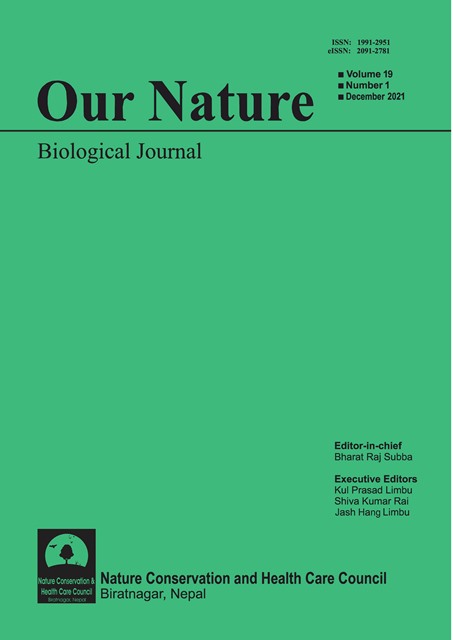Application of Water Quality Index (WQI) for groundwater quality assessment of Biratnagar, Nepal
DOI:
https://doi.org/10.3126/on.v19i1.41260Keywords:
Arsenic, drinking water, physicochemical parameters, tube wells, turbidityAbstract
This present hydrological study assessed the groundwater quality of Biratnagar Metropolitan by the application of Water Quality Index (WQI). It has been determined on the basis of analyzed groundwater samples for some important physicochemical parameters such as pH, turbidity, electrical conductivity (EC), dissolved oxygen (DO), free carbon-dioxide (FCO2), bicarbonate (HCO3), total hardness (TH), phosphate (PO4-P), nitrate-N (NO3-N), arsenic (As), and fluoride (Fl) collected from 110 representative tube wells during post-monsoon period of 2015. The status of fluoride was below detectable level (BDL) in all the analyzed groundwater samples. The WQI for these samples ranged from 84.54 to 403.14. The high value of WQI has been found mainly due to the higher values of turbidity, FCO2 and arsenic in the groundwater. The results of study have been used to recommend models for predicting water quality. The classification of water quality on the basis of WQI value have been found to be good water (18.18%), poor water (59.09%), very poor water (13.64%) and unsuitable for drinking (9.09%). The result of the study suggests that the groundwater of the area needs some degree of treatment before consumption, and it also needs to be protected from the threat of contamination. The groundwater is one of the major source of drinking water as well as for irrigation in study area.
Downloads
Downloads
Published
How to Cite
Issue
Section
License
Copyright (c) 2021 Bishnu Dev Das, Sunil Kumar Choudhary

This work is licensed under a Creative Commons Attribution-NonCommercial 4.0 International License.
This license enables reusers to distribute, remix, adapt, and build upon the material in any medium or format for noncommercial purposes only, and only so long as attribution is given to the creator.




